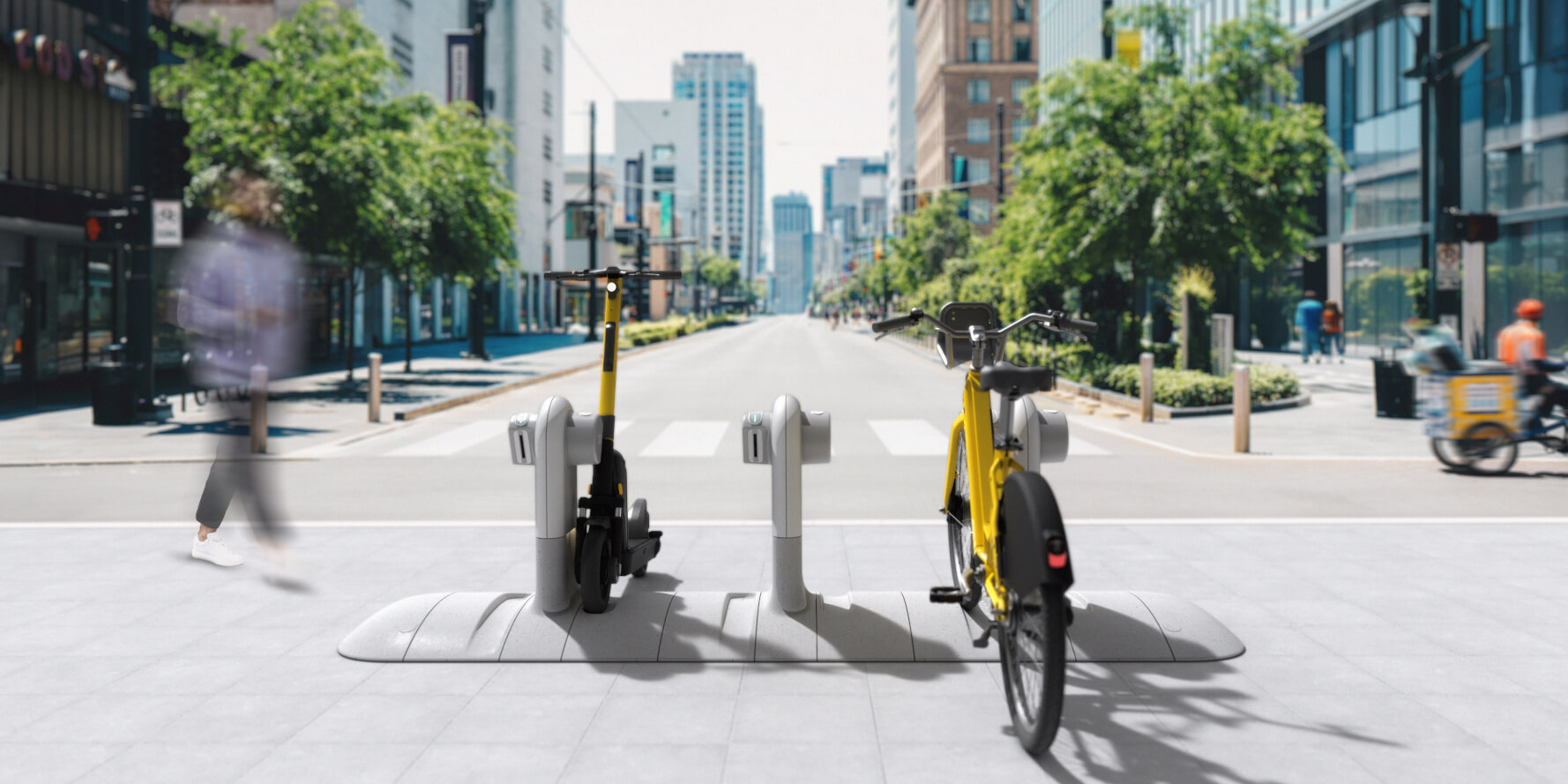Published on July 20, 2023 by Kseniia

Ever wondered how to declutter city streets from bikes and scooters, while still keeping your favourite local transportation modes readily available? The solution is universal docking and charging stations for (at least!) sharing mobility services.
A growing number of cities are implementing infrastructure specifically designed for micro-vehicles such as electric scooters and bikes. This is not only the next logical progression in the micro mobility market, but also a necessary one. It helps keep city dwellers and local authorities content with clean streets and convenient transport, while simultaneously making operator businesses more profitable. The key to profitability lies in extending vehicle and battery life and reducing operational costs.
Tracing back to the origins of docking stations, we are taken to the birth of the bike-sharing business in 1991 in Copenhagen, Denmark, with the “Bycyklen” or “City Bikes” program. The coin-operated bikes could be conveniently picked up or returned at designated docking stations scattered across the city.
Fast forward to today, docking stations have evolved to accommodate not just bikes, but also scooters, allowing users to park and charge electric vehicles when not in use. However, the modern docking business faces a challenge: the rise of dockless models like free-floating systems. While highly convenient for local commuters and tourists due to the ready availability of vehicles, this model is less sustainable and tends to clutter our city streets.
Before integrating shared bike and scooter services into the city’s daily rhythm, careful consideration must be given to overall transport infrastructure design. We’re talking about creating cycle-friendly roads and ensuring the availability and quality of bike lines across the city, including the suburbs. It is these initial steps that are key to building a robust micro mobility infrastructure and encouraging people to swap their cars for bikes and scooters.
The critical next step involves ensuring that shared bike and scooter services do not result in chaotic piles of discarded metal. The solution? A universal infrastructure to neatly organize this transportation. The market currently offers separate docking stations for bikes or scooters. A city relying on these would need multiple types of installations and service providers. A more efficient solution is a vehicle-agnostic station that can accommodate both scooters and bikes, and also different models used on a market, thus streamlining the infrastructure.
Enter the KNOT team, a pioneer in this approach. We’ve been tirelessly working to create a universal physical station that can dock and charge any type of shared micro mobility vehicle. Our aim is to design micro mobility solutions that cater to the needs of locals while simultaneously bringing revenue to operators, as their vehicles are securely docked and charged.
This autumn, we are introducing the latest addition to our repertoire, the Knot Stations V6. Crafted from durable, non-rust materials like concrete and aluminum, these sixth-generation stations are designed to withstand even the harshest conditions.
The V6 stations are KNOT’s contribution to the future of the micro mobility market, a future where city design responds to the needs of citizens and creates a welcoming and comfortable living environment. Don’t choose between bikes or scooters - dock them all at our new KNOT station.